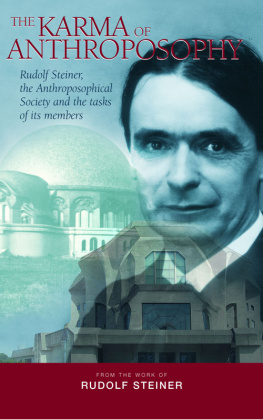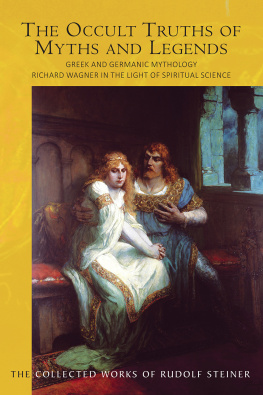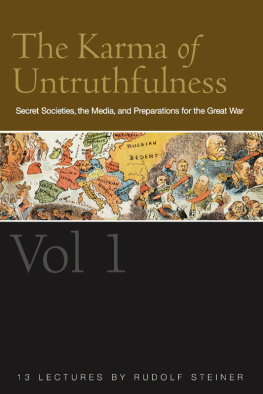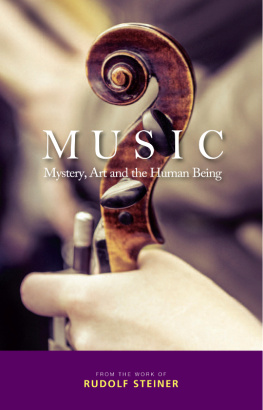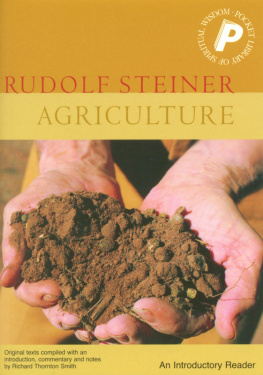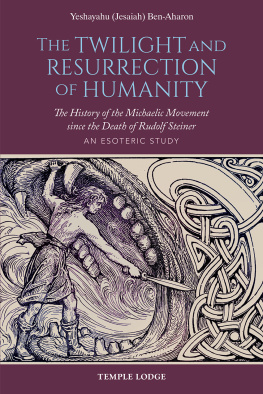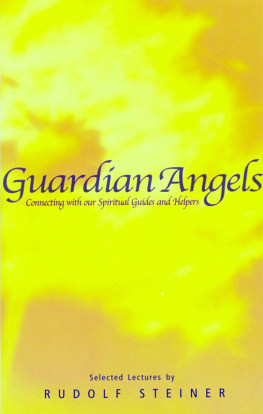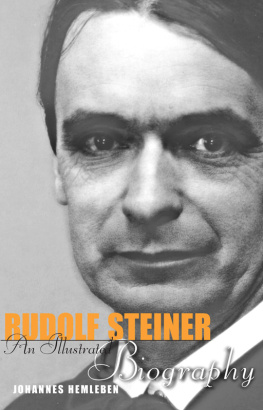
RUDOLF STEINER (18611925) called his spiritual philosophy anthroposophy, meaning wisdom of the human being. As a highly developed seer, he based his work on direct knowledge and perception of spiritual dimensions. He initiated a modern and universal science of spirit, accessible to anyone willing to exercise clear and unprejudiced thinking.
From his spiritual investigations Steiner provided suggestions for the renewal of many activities, including education (both general and special), agriculture, medicine, economics, architecture, science, philosophy, religion and the arts. Today there are thousands of schools, clinics, farms and other organizations involved in practical work based on his principles. His many published works feature his research into the spiritual nature of the human being, the evolution of the world and humanity, and methods of personal development. Steiner wrote some 30 books and delivered over 6000 lectures across Europe. In 1924 he founded the General Anthroposophical Society, which today has branches throughout the world.
THE KARMA OF
ANTHROPOSOPHY
Rudolf Steiner, the Anthroposophical Society
and the Tasks of its Members
RUDOLF STEINER
Compiled and edited by Margaret Jonas and Matthew Barton
RUDOLF STEINER PRESS
Rudolf Steiner Press
Hillside House, The Square
Forest Row, RH18 5ES
www.rudolfsteinerpress.com
Published by Rudolf Steiner Press 2013
Earlier English publications: see Sources
Originally published in German in various volumes of the GA (Rudolf Steiner Gesamtausgabe or Collected Works) by Rudolf Steiner Verlag, Dornach. For further information see Sources. This authorized translation is published by permission of the Rudolf Steiner Nachlassverwaltung, Dornach
All material has been translated or checked against the original German by Matthew Barton
Translation and selection Rudolf Steiner Press 2009
All rights reserved. No part of this publication may be reproduced, stored in a retrieval system, or transmitted, in any form or by any means, electronic, mechanical, photocopying or otherwise, without the prior permission of the publishers
A catalogue record for this book is available from the British Library
ISBN: 978 1 85584 429 2
Cover by Andrew Morgan Design
Typeset by DP Photosetting, Neath, West Glamorgan
Contents
Editor's Preface
The lectures and excerpts compiled here do not aim to be an exhaustive account of all that Rudolf Steiner said during 1924, his last year on earth, about the karma of the Anthroposophical Society. However they certainly do reproduce the most salient points he was making, and vividly highlight what he saw as the anthroposophical movement's vital task in renewing civilization and preserving it from the threat of decline. In these lectures and excerptshere presented in the chronological order in which they were given, and ending with Rudolf Steiner's last addresswe can really get a sense of an imminent spiritual battle, of huge forces gathering to fight for the soul of humanity.
A movement is of course only as strong as the sum of its members, and their sincere engagement and collaborative participation. To waken the members of the Anthroposophical Society to the dimensions of their task, Steiner felt it essential for them to recognize each other in a profound sense: to understand the many different karmic threads from which the movement is woven. Such recognitionof difference as much as unitycan give the strength of diversity which, if unconscious and unrecognized, would easily otherwise sunder people. In other words, Steiner saw the unity of the Anthroposophical Society not as something in any way imposed or artificial, but as rooted instead in its members perception and understanding of their own deepest impulses in past lives and in the world of spirit between these lives.
This offers us a really striking panorama, in which we are compelled to broaden our narrow vision of life in general and anthroposophical endeavour in particular, and see the Anthroposophical Society not as a small backwater promoting hopeful but insignificant ventures, more or less drowned out by the pouring torrents of the mainstream, butto use a different metaphoras the live yeast that can set all culture rising.
Steiner was at pains to emphasize that reflections on karma involve great subtlety and complexity, along with the need for a sense of deep responsibility. There is inevitable repetition here, since these lectures were given to a range of different audiences. Yet on each occasion Steiner approaches the same or similar aspects from a subtly different perspective, and this is surely one way in which he tried to do justice to the interwoven complexity of his theme.
M.B.
Prelude: The Ghosts of the Past
Extract from a lecture given at the Goetheanum on 4 July 1924
Each of us experiences our personal destiny. But when even two people work together something quite different arises than just fulfilment of each person's separate destiny. Something develops and unfolds between these two people which goes beyond what each individual experiences alone. For ordinary consciousness, the connection between this kind of dynamic between people and what occurs above in the world of spirit is not immediately discernible. Only when sacred, spiritual activity is drawn into the sensory, physical world, when people intentionally transform their physical and sensory deeds so that they become, simultaneously, deeds in the world of spirit, is such a connection created.
And all that occurs between people in this way, in a broader dimension, is something quite different from what each of us experiences as our destiny. Everything which is not individual human destiny but comes about through thinking, sensing, feeling and acting together is connected with what the Seraphim, Cherubim and Thrones do above in the worlds of spirit. And into their deeds flow the deeds wrought through human connections, and in the convergence of separate human lives.
The wider view that opens to the gaze of the initiate is of particular significance here. We gaze upwards and there we see the heavenly consequences of what occurred on earth in the late 70s, the 80s and 90s of the nineteenth century. It is as if a fine, spiritual rain were falling down upon earth, trickling into human souls and urging them to engage in what now arises between people today, as historical consequence one can say.
And in turn we can likewise see how what was done here on earth by human beings in the 70s, 80s and 90s of the last century still lives in vivid thought reflections mediated by the Seraphim, Cherubim and Thrones.
If we understand these things we can have precise insight into the following. When speaking with someone today, you can sense that whatever he says that does not really come through his own emotions or inward impulse, but instead is general opinion and is expressed in this way because he is simply a child of his age, is often connected with people who are no longer alive but lived in the 70s, 80s and 90s of the past century. It is really the case that we can often see someone today as though surrounded by a gathering of spirits who are working upon him but are really only the after-images raining down of what lived in people on earth during the last third of the nineteenth century.
Thus in a real sense you can say that the revenants, the ghosts of a former age, mingle with a later one. This is one of the subtle, general karmic influences which affect things in the world, and which the most occult of occultists often do not consider. Nowadays one often feels like saying to someone who expresses a regurgitated view rather than something that comes from himself, his own personal experience: That's just something that's been passed on to you from the last third of the nineteenth century!
Next page
